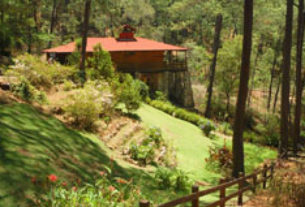Mexico Notes– part 6
But to me, a dreamer of dreams,
to whom what is and what seems
are often one and the same,
the bells of San Blas to me
have a strange wild melody,
and are something more
than a name.
Henry Wadsworth Longfellow
The Bells of San Blas
San Blas squats at the cusp of the ocean. A spirited, ravaged place – old intention of pirate, frequent target of hurricane. We are here for the birds. And yes, we made it. We rolled into a gas station about 60 miles outside of San Blas and filled up, too stress-exhausted to say a word. Which is, in the realm of marital relations, a good thing.
Like Mazatlán, this is not a check-it-out ex-pat destination. It is a stopover with the elements. Still, were it not for the mosquitoes, jejenes (no-see-ums) and dense humidity, I would stay. But of course, if it were not for the bugs, there would be no birds. And there are millions. Here, rivers and inlets converge with the sea, creating a world of water. One can drive or walk anywhere to bird. From jungle to miles of shrimp farms to mangrove forests.
The zocalo and her market are minus the bustle of many Mexican villages. Here, movement resembles the tide. A gradual weave of activity. The slow pace of gritty, good people. Those who wait out hurricanes and are not quick to smile at strangers.
We stay a few blocks from the plaza and eat our meals at “McDonalds”, a restaurant recommended by my primo-birder friend Steve, who had visited San Blas fifteen years ago. Yes, Steve, it’s still here. A survivor. Although Mr. McDonald, the man you remember as a “great big black guy who had grown up in the Caribbean and spoke perfect Spanish and English” was nowhere to be seen. At this simple place I order camerones langostina, shrimp as big as lobster and every bit as sweet.
Late one afternoon we find our way up San Basilio Hill to the old fortress site that overlooks the village. The guard at the gate is sweet and has no change, so we pay extra pesos for admission. Still, a pittance. We have the place to ourselves, as the hazy tangerine sun slips into the ocean. Bats skim the sky. A coati ambles by. The village below lights with dusk, as smoke clouds the streets. Fishermen on the river steer shoreward, in their small, wooden boats. This fort was constructed in 1760 to defend San Blas by the Spanish. The original town was here, on the hill, for protection. Not far away are the ruins of the ancient Temple to our Lady of the Rosary, now home to hundreds of black-bellied whistling ducks.
We sit among fallen-down walls and massive ebony cannons that point to the ocean. From the cooler in the back of the truck, Tom pours his usual, a glass of red wine, as I mix a gin and tonic. We sit in silence and smoke a cigar, a favorite ritual for special times, special places. Tonight, the smoke repels the bugs.
Darkness descends, as mosquitoes eventually fight through the smoke. We pack up and head down the hill to the entrance where we paid, and cannot believe what we see. The gate is closed. And locked. Oh geez. We glimpse around for other ways out. Nada. Trapped, as Mexico unfolds her spell. We take a breath, look at one another, and move beyond the tunnel vision of panic. Not far away, a small fire burns. A tiny hut that looks abandoned gives up the little gateman, who steps outside, smiles, and holds the key to the hefty padlock.
The literature for San Blas proclaims rare truth not usually found in promotional pamphlets. It talks about the jejenes. It stresses the sleepiness of San Blas. How visitors are received “without ceremony.” Damn straight. Don’t come here if you need to be pampered. As for comfort, most of the time it was so buggy we couldn’t sit outside. Here, rewards are buried in discomfort, like the time we ventured out in the scorching heat, dripping sweat, and happened upon a butterfly with wings the size and shape of a white iris, lined with lavender.
Our final day in San Blas I lathered myself in high potency deet repellant and settled down to watch a tree full of nesting yellow-crowned night herons. Slowly. Very slowly, the male walked down the branches, stopping along the way for no particular reason. He finally dropped to the ground to gather a good-sized stick about six inches long. Then, back up. A slow progression. He stopped at the same perches where he paused on his way down. Four, five stops. He made his way to the nest in the top of the tree, where the female stood and waited, beside the nest. He offered the stick to her. She took it. Then, for several more minutes, she added it to the nest while he stood and waited. Content, they stood still together, until he began the ritual anew, sidestepping his way down the tree. This, the essence of San Blas.
Special Bird Sightings of San Blas: great blue heron, great egret, snowy egret, little blue heron, tricolored heron, yellow crowned night heron, roseate spoonbill (wow!), wood stork, black-bellied whistling duck, zone-tailed hawk, black-and-white hawk eagle, collared micrastur (forest falcon – yeah Tom, good eye!), black-necked stilt, lesser yellowlegs, ruddy ground dove, ruddy quail dove, green parakeet, Mexican parrotlet, lineated woodpecker, dusky flycatcher, social flycatcher, golden vireo, blue-black grassquit (wow again!), yellow-throated euphonia, rusty sparrow, black-chinned sparrow, black-throated sparrow, yellow-winged Mexican cacique, lesser goldfinch, citreoline trogon.
I will return.

